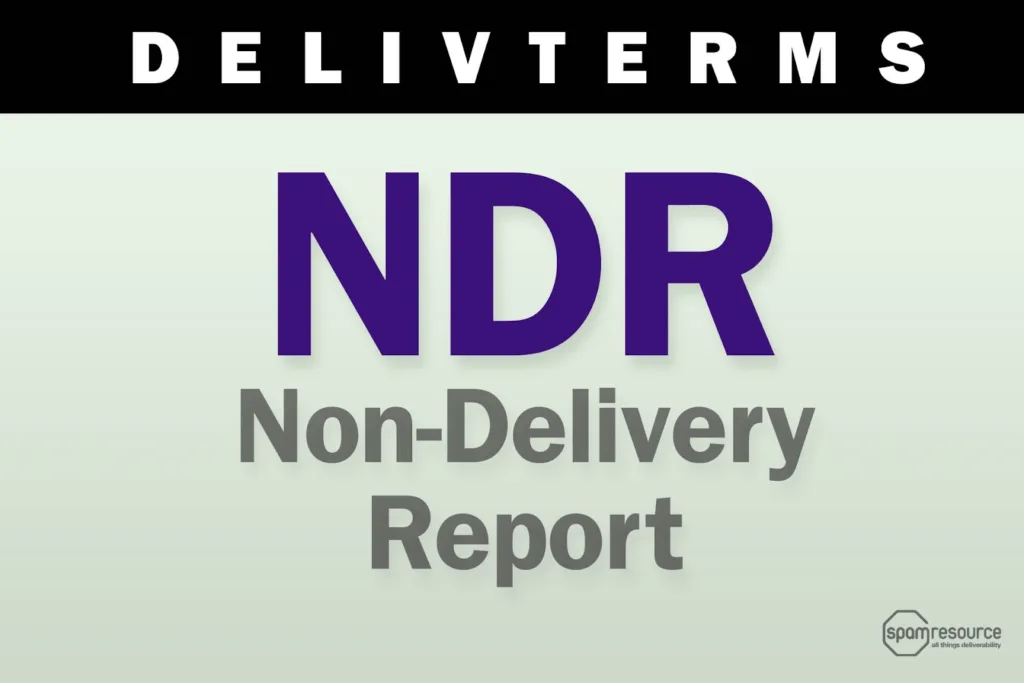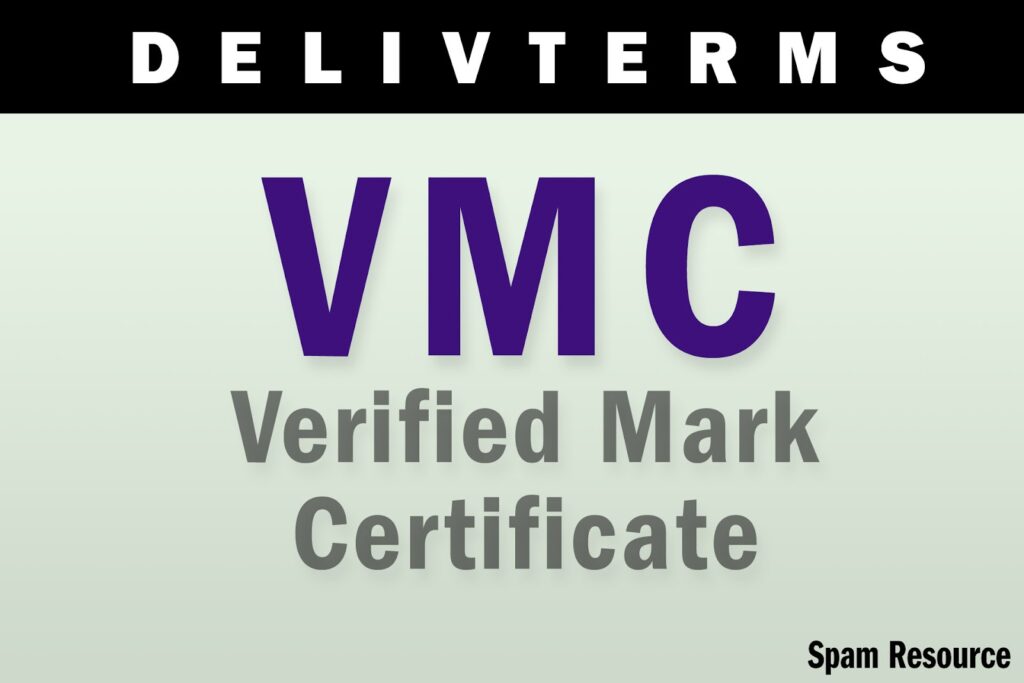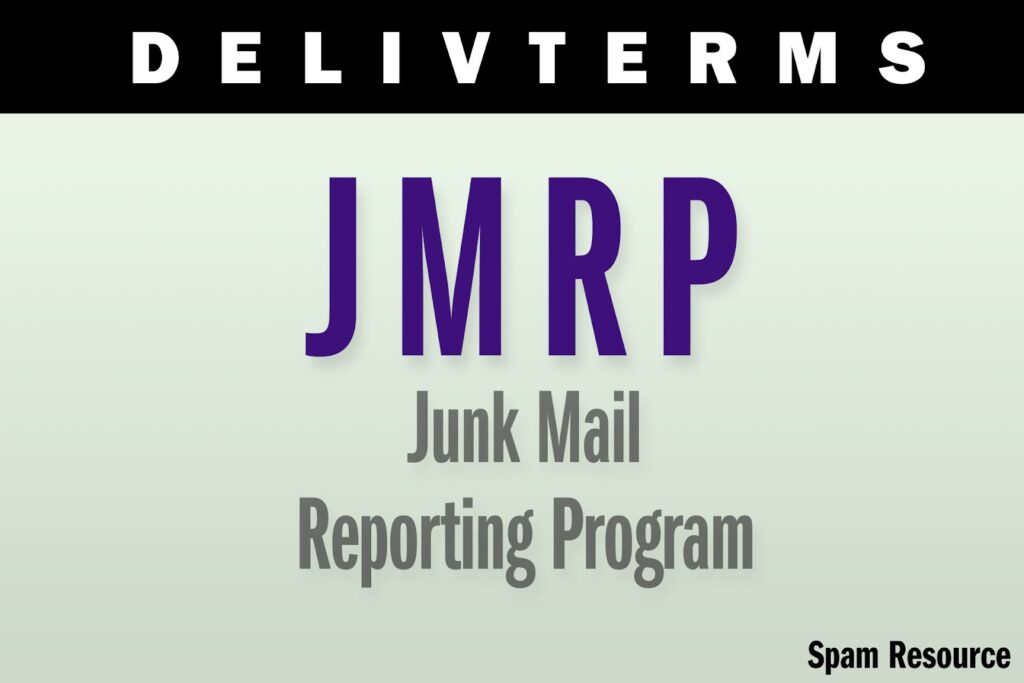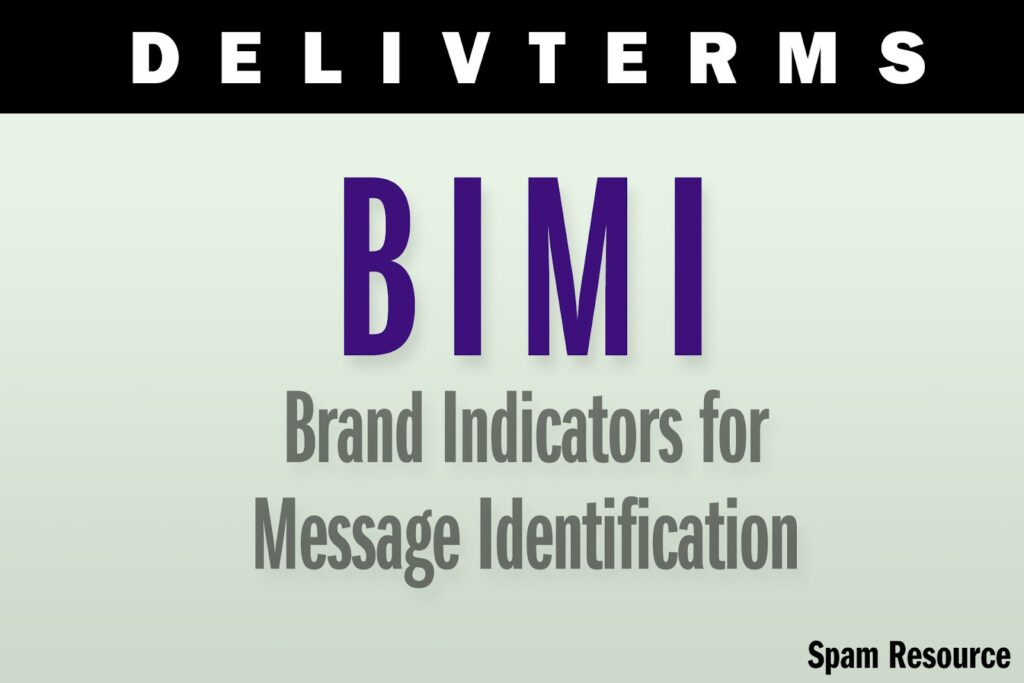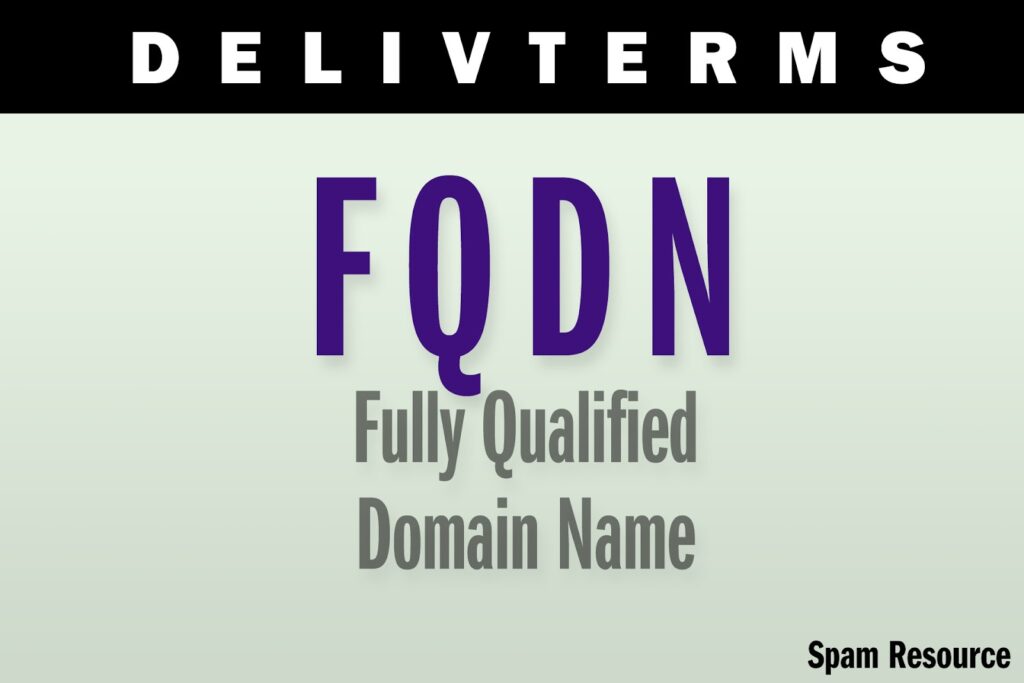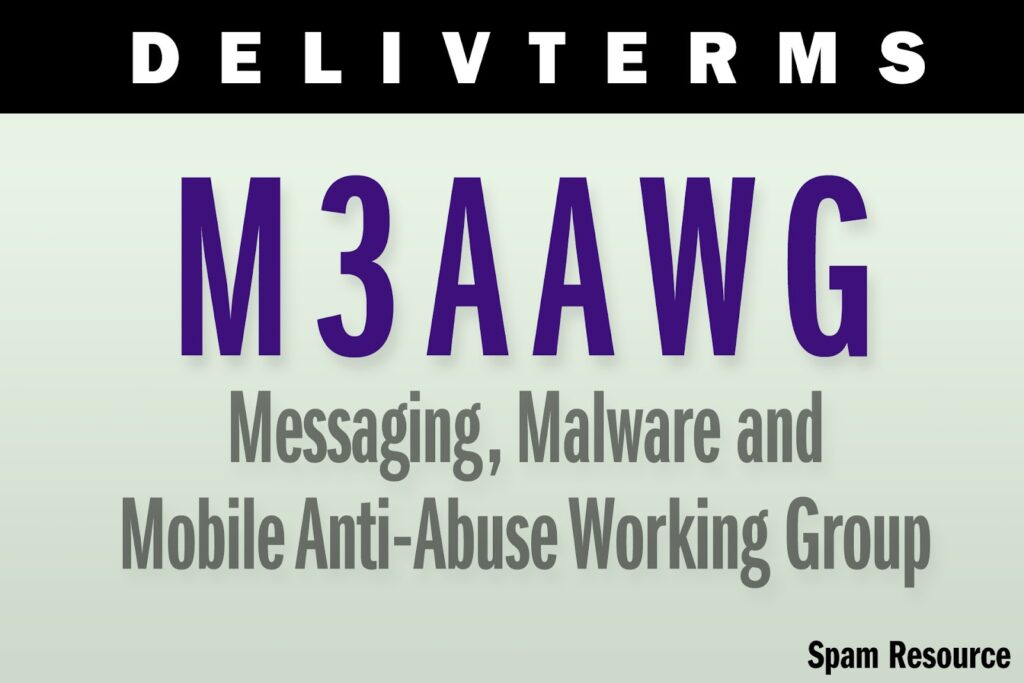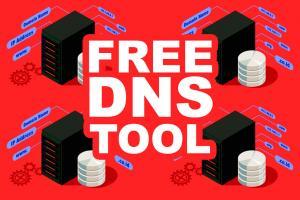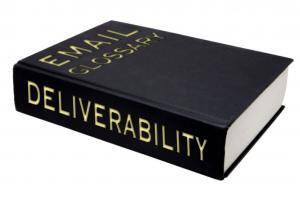delivterms
It’s time to decode another deliverability acronym. Today, we’re going to tackle NDR, which stands for “Non-Delivery Report.” NDR is another way to say “bounce message.” I consider them essentially to be synonyms. In my opinion, the acronym NDR is a bit of a Microsoft-ism, and the more appropriate generic term is probably “bounce message.” What’s a bounce message? Whenever you try to email somebody, but you get a notification email back that tells you that your attempt to mail that someone was unsuccessful. That response, notifying you of the delivery failure is an NDR or bounce message. When you use an email service provider, CRM or newsletter tool to send email messages, these tools typically receive and process any bounces for you automatically. It’s not always necessary to generate a whole NDR email message when a message doesn’t go through — much of the time, when a newlsetter tool
It’s time to decode another deliverability acronym. Today, we’re going to tackle DMARC, which stands for “Domain-based Message Authentication, Reporting and Conformance.” It’s a bit of a mouthful, but it’s actually a relatively simple and good thing. This domain-level setting allows a domain owner to: Tell receiving internet service providers (ISPs) and mailbox providers (MBPs) (think Gmail, Yahoo, Outlook.com and others), what to do with email messages sent to email users on their platforms, purporting to be from your domain, but failing authentication checks. Protect your domain name by locking it down, setting a policy that says that mailbox providers should not trust mail from my domain unless it authenticates properly. Instruct mailbox providers where to send reports to help summarize and monitor for email authentication compliance. DMARC is implemented via a DNS text record. Learn more about that here. DMARC effectively requires correctly configured SPF (Sender Policy Framework) and/or
Time to decode another deliverability acronym. Today, we’re going to talk about VMC, which stands for “Verified Mark Certificate.” A VMC is something that a domain owner will purchase to go along with their BIMI (“Brand Indicators for Message Identification”) sender logo implementation. BIMI is the specification to allow a domain owner to publish details of a logo meant to show up in the inbox next to email sends from that domain. VMC is a certificate purchased from and issued by either DigiCert or Entrust. The purchase process involves either of those companies verifying that you are who you say you are, and that your logo is appropriately trademarked. VMC is an optional add on to the BIMI specification. However, Apple and Gmail will only display BIMI logos for domains that have implemented the Verified Mark Certificate (VMC) process. No VMC means no BIMI logo in Gmail or on Apple
It’s time for another entry in the DELIVTERMS dictionary! Today, let’s define JMRP. JMRP is the “Junk Mail Reporting Program,” the mechanism by which email sending platforms and internet service providers can receive complaints back whenever an Outlook.com (Microsoft OLC) user clicks the “report spam” button to tell Microsoft that they think a particular email message is spam. You might find some older documentation that refers to this as the “Junk Mail Reporting Partner Program” (JMRPP) – that’s an older name for the same thing. Overall, mailbox providers and internet service providers call these types of mechanisms “Feedback Loops.” Thus, the JMRP is the Microsoft Outlook.com ISP feedback loop. A sender must utilize a dedicated sending IP address to sign up for JMRP; the intent is for the owner of an IP address to get complaints back about mail sent from their own IP address. (Platform owners, whether or not
Today, let’s define the acronym BIMI, aka “Brand Indicators for Message Identification.”Let’s go straight to the folks who have created the BIMI specs, the Authindicators Working Group. From their website: “Brand Indicators for Message Identification is an emerging email specification that enables the use of brand-controlled logos within supporting email clients.”What? It’s a way to publish a logo that will show up next to email messages you send.Why? To increase branding, increase customer confidence that your emails are legitimate, and it can increase engagement.How? First, you must secure your domain with DMARC (and that DMARC policy must be a “strong” one, aka “quarantine” or “reject”). You must purchase a “verified mark certificate” (required by some BIMI-supporting mailbox providers, though not all) to prove that your logo is properly trademarked, and then you need to publish a version of your logo in a special limited vector graphics format. BIMI is supported by
Today, let’s define the term “fully qualified domain name,” aka FQDN.It can seem like a bit of a complicated term for a simple thing. What’s an FQDN? It’s a whole internet address. Sometimes it might be called a subdomain (I’m guilty of this), or an internet hostname. Think of it as the server name or host name + the domain name. For www.spamresource.com, www would be the hostname or server name, and then spamresource.com is the domain name. So www.spamresource.com is an FQDN, a fully qualified domain name.If somebody asks you if you have a DMARC record for the FQDN email.spamresource.com, you would specifically enter “email.spamresource.com” in a DMARC record lookup tool. This could be called checking for a DMARC record at the FQDN level or at the subdomain level.In the case of sending from a subdomain, like email.spamresource.com, that subdomain would also be considered an FQDN, for purposes of
Today: Let’s talk about domain warming.You might have heard about IP warming. I’ve talked about it before (and my Kickbox colleague Jennifer Nespola Lantz has covered the topic in great detail). TL;DR? IP warming is, when you’re newly sending from a particular dedicated IP address, you build up your sending reputation, to maximize your chances of solid inbox placement, by slowly building up your email send volume over the first thirty days or so of email sending. In other words, you don’t just show up and start blasting millions of emails a day. You limit your volume until internet service providers (ISPs) and mailbox providers (MBPs) know who you are.Domain warming is a very similar concept. When you introduce a new domain name, either because you’re launching anew, or because you’re rebranding, domain warming means starting out with low volume sends referencing that domain, and building up volume over the
Founded in 2006, the Messaging, Malware and Mobile Anti-Abuse Working Group (M3AAWG) is a messaging industry working group comprised of sending and receiving platforms, security companies and more come together to collaboratively address spam and internet security issues.Initially, the group was called “MAAWG” and focused on email and anti-spam. Over the years, their focus has expanded, thus the “3” reflecting growth from just “messaging” to “messaging, malware and mobile” in their mission. Anti-spam and security best practices for both senders and receivers (things like the right way to send mail without being a spammer, and the most appropriate ways to block spam) are just one of the common areas of discussion. Folks within M3AAWG also work together to address technical issues around email and messaging technology and emerging threats. (I say “email” a lot here as it’s really my personal focus. I’ve got friends who specialize in other areas as M3AAWG members
DELIVTERMS: The (more or less) regular series here on Spam Resource that defines deliverability terminology. Unlike some other series out there in the world, this one has neither hot questions nor even hotter wings. But I do hope to help shore up gaps in your email and deliverability-related knowledge. Today, I’m going to talk about MTAs and MUAs, mail transfer agents, and mail user agents.MTA means “Mail Transfer Agent.” The acronym MTA is basically interchangeable with the term “mail server.” An MTA or mail server is an software application running as server software to handle processing and transmission/receipt of email messages. It’s an MTA that responds to a connection on port 25 and answers with “220” and an SMTP banner and accepts or sends inbound or outbound email, transmitted via SMTP. When I look up the MX record for a domain, and I connect to port 25 of that MX
DELIVTERMS: The (almost) weekly series here on Spam Resource that defines deliverability terminology. Today, I’m going to talk about Smart Network Data Services, commonly called Microsoft SNDS.SNDS is a Microsoft sender reputation data portal. It provides senders feedback on their deliverability reputation based on the stats around their sends to the Microsoft consumer mailbox domains — aka Outlook.com, aka Hotmail.This reputation dashboard provides data based on sending IP addresses. To be able to view SNDS reputation data, you’ll need to work your way through the SNDS IP registration process, where Microsoft will send an email address to a certain address to verify that you own (or have exclusive access to) a given sending IP address. This means that if you use an ESP or CRM platform, that platform may receive that verification request and may have to confirm it for you. Most seem willing to do this, in my experience.Note

